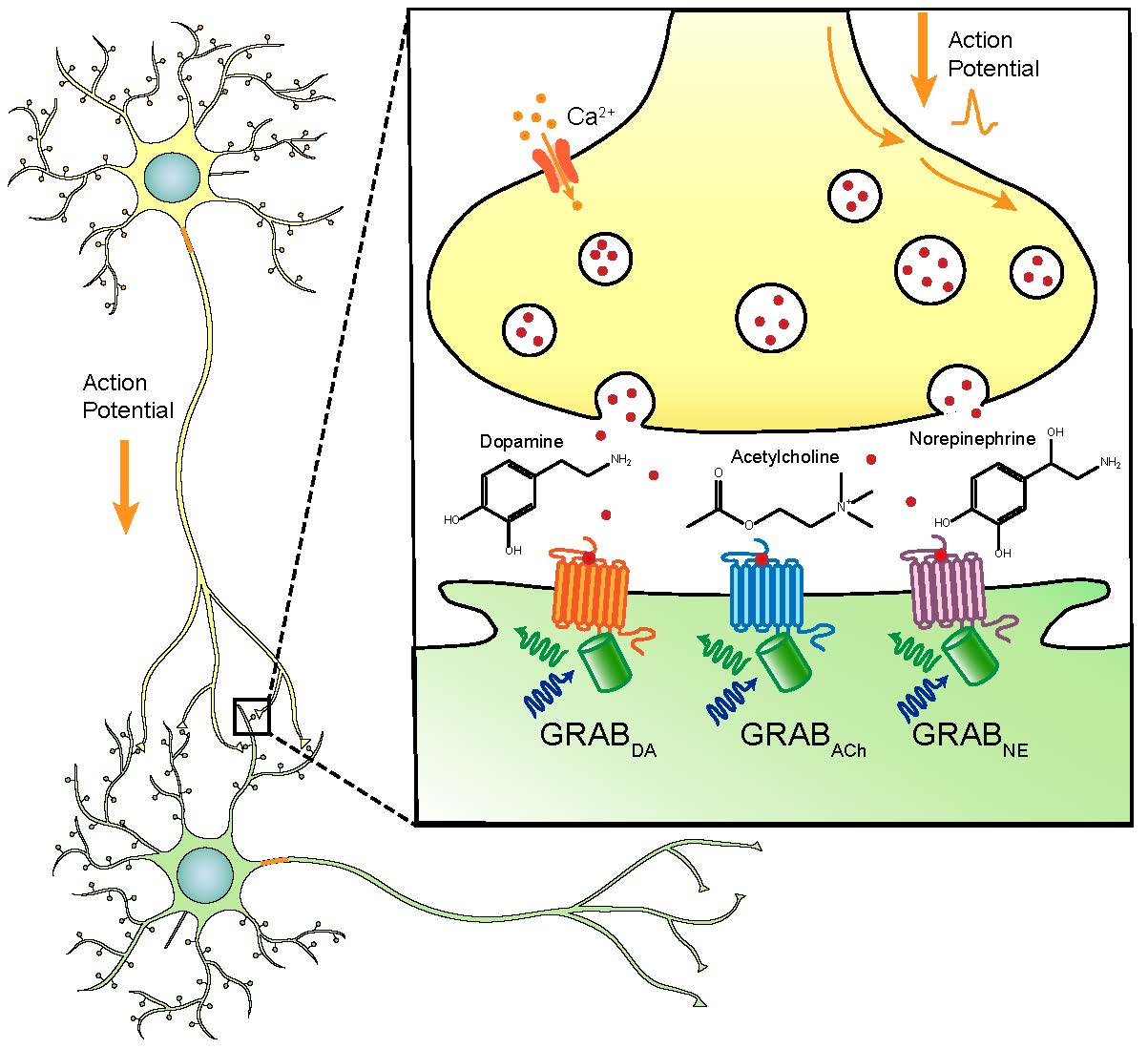
Spying on neuromodulation by constructing new genetically-encoded indicators
Description
Research Interests: The human brain consists of billions of neurons, including thousands of cell types, connected to form networks by trillions of synapses. The interplay between distinct neuronal types through synapses by long range projections and short range local connections leads to cognitive brain functions such as perception, decision making and motor control. Neuromodulators control brain function by selectively recruiting or disengaging defined population of neurons through cell type-specific regulation of transmitter release, membrane excitability or both. The complex action of neuromodulators, the diversified neuronal cell types and the sophisticated anatomy of the brain together pose huge technical challenges for neuroscientists seeking to unravel the actions of neuromodulators within local circuitry. To overcome these problems, we are interested in developing a new palette of biosensors that can be used to visualize turnover of various neuromodulators. In addition, we are developing a novel genetically-encoded fluorescent detection platform that would enable the visualization of target activation by various neuromodulators in real time. Together, these efforts will not only yield new insights into the secretion and activation of neuromodulators with good spatial and temporal resolution, but also provide a novel fluorescent toolbox to the neuroscience community at large, enabling them to visualize their favorite neural circuit with cellular and synaptic specificity that is currently lacking.

